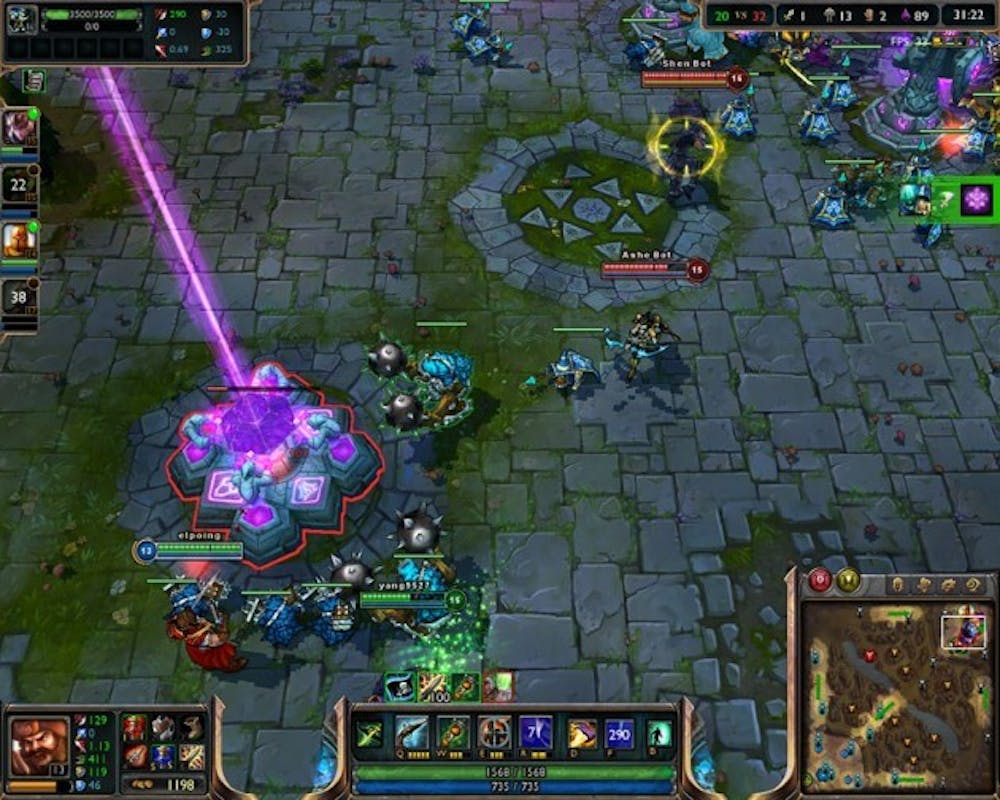Not all games cost $65 dollars for hours of fun.
Games like League of Legends and Dota 2 have become some of the most popular games on the planet, captivating the attention of more than 20 million people daily.
League of Legends has become so popular that it sold out a 42,000-seat stadium for its World Championship, which will be shown on Twitch, a streaming website, to millions of additional viewers.
Dota 2 (Defense of the Ancients) came out after League of Legends, but has become just as popular. It’s recent global tournament, The International, had a prize pool of more than $10 million and was televised on ESPN3.
For college students free-to-play games are a great bargain. They’re free to download, easy to get into, offer endless hours of entertainment and only require money to either speed up various parts of games’ progression or for new skins, items and aesthetics for characters and players.
League of Legends and Dota 2
Developer Riot Games and Valve
Some people will cry fowl to group these games together. But these two juggernaut titles constantly play a popularity tug of war. The games have each become a global phenomenon, selling out stadiums around the world for tournaments, dolling out millions in prizes and attracting millions of players each day. Dota 2 has more than 800,000 concurrent players at any given time and Leauge’s developer has publically stated their game attracts around 27 million players each day.
These games are almost as different as they are similar, each having plenty of unique features, benefits and drawbacks. For the most part, they revolve around a team of five champions or heroes – there are more than a 100 to choose from on each game – fighting to take out the other team’s base.
Despite their differences, both games can take hours to learn, days to master and weeks later you’ll find yourself having as much fun as an experienced player as you did as a noob, cluelessly losing to easy bots.
Hearthstone: Heroes of Warcraft
Blizzard Entertainment’s online collectible card game recently passed 20 million players worldwide – an impressive feat for a game that’s only been out since March, following a lengthy public and private beta.
The game is based around the many heroes, characters, spells and lore from Warcraft, including the real time strategy series that came before World of Warcraft.
As one of nine heroes or heroines, each with their own unique spells, cards and hero power, players build decks to beat one another. Basic cards are unlocked through leveling up. Rarer cards are unlocked by getting card packs, which are either unlocked by completing challenges like winning a certain number of games as each hero, giving the player gold to buy them or by spending real money.
Whether you choose to buy into Hearthstone or not, the experience is still easy to learn, fun to get into and hard to put away.
Team Fortress 2
Developer: Valve
In a few weeks, Valve’s iconic first person shooter will turn 7-years-old.
Old as it may be, it’s certainly gained and held plenty of popularity over the years, especially since it became a free to play game in 2011. Unique items and character outfits can be purchased for real money and traded amongst players, adding some ridiculous customization to the game’s nine classes. From the tanky heavy with his Gatling gun to the stealthy spy with his disguises and butterfly knife, there’s a lot of different ways to play this team-based game, accented by unnecessary, but inexpensive purchasable items.
email: arts@ubspectrum.com





